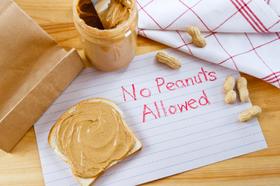Sugar-laden drinks like soda and some fruit juices have been linked to a wide range of ills, from the current obesity epidemic to the rising incidence of type II diabetes and heart disease in this country. The soda habit is one that frequently begins during youth, particularly for children that have the sugary drinks readily available at home or at school. Fortunately, many schools are taking a stand against allowing these types of drinks on their campuses, with fewer soda options available at public schools, according to a recent study.
Research Methodology
Â鶹ąű¶ł´«Ă˝ research conducted by the Institute for Health Research and Policy at the University of Chicago at Illinois indicates that the availability of sugary beverages at the elementary school level is on the decline. The study, conducted by Lindsey Turner and Frank Chaloupka, used the guidelines issued by the Institute of Medicine (IOM) when analyzing their research. The IOM recommends that schools only offer students water, 100-percent juice and non-fat and 1-percent milk on their beverage menus, according to the .
Turner and Chaloupka’s research looked at five years of surveys from public elementary schools nationwide. According to , researchers were able to compile data from hundreds of schools between 2007 and 2011. The information was provided by principals and food service workers that recorded the specific types of beverages available to students and precisely where in the school those beverages were sold.
What the Numbers Show
The research found that the number of students who could buy beverages that were not included on the IOM’s list, including soda, peaked in 2008 at 47 percent. Since that time, the number has dropped, with just 33 percent of students getting those options in 2011. In addition, the surveys found that the availability of drinks in vending machines in schools had also dropped – from 16 percent in 2008 to just 11 percent in 2011.
“We are seeing some really encouraging changes in the school environment,” Turner told . “They are removing sugary beverages and high-fat milk. However, there is still progress to be made.”
While Turner added that the trend is positive, she reminded U.S. News and World Report, “There is still a third of kids who have access to beverages that are not approved.”
Still More Work to Do
While the research shows that availability of these beverages at school may be on the decline, the study did not address other sources of the drinks, including restaurants and the student’s own home. Other studies suggest that limiting intake of sugary beverages at school does not reduce a child’s intake overall. Still, the trend is a step in the right direction.
Tracy Halliday, a spokesperson for the American Beverage Association, told U.S. News and World Report that the study shows a voluntary ban on these types of beverages in schools is working.
“In early 2010, our industry announced it had successfully implemented voluntary National School Beverage Guidelines, reducing beverage calories shipped to schools by a dramatic 88 percent since 2004,” Halliday told U.S. News and World Report. She added that the guidelines eliminate full-calorie sodas in schools nationwide.
Obesity Concerns Fuel Movement
At the core of the movement to get sugar-loaded drinks out of school is concern about the rising obesity epidemic facing children in this country. U.S. News and World Report cites statistics on childhood obesity from the CDC that show seven percent of children in the U.S. were categorized as obese in 1980. By 2008, that number had increased to 20 percent – one in every five children. Children who become obese at an early age have a much higher risk for a host of medical conditions, including type II diabetes, hypertension and heart disease.
In addition, research has linked consumption of sugary beverages directly to a heightened incidence of weight gain and type II diabetes for some time. According to Food Consumer, a recent study at Harvard School of Public Health has added heart disease to the list of potential health conditions. This study, conducted by Lawrence de Koenig, PhD, showed that people who consumed a significant amount of sugar-sweetened beverages were 20 percent more likely to be diagnosed with heart disease.
The American Cancer Society is also urging the Surgeon General to study the impact of sugar-sweetened beverages, according to the . The organization has voiced concerns about the contribution of these beverages to the obesity problem in the U.S., as well as other potential health risks.
“An unbiased and comprehensive report on the impact of sugar-sweetened beverages could have a major impact on the public’s consciousness and perhaps begin to change the direction of public behavior in their choices of food and drinks,” the American Cancer Society was reported to have stated in the Chicago Tribune.
The concern over the health implications of consuming sugar-based beverages is widespread, but fortunately, many schools across the country are addressing concerns directly. With research indicating these beverages are becoming less prevalent in elementary schools from coast to coast, the hope is that this trend will grow to encompass beverage consumption in other arenas as well. For now, health officials are pleased to see that schools are voluntarily coming onboard to do their part to create a healthier student body.
These research results come at a key time for the U.S. Department of Agriculture, which is getting ready to draft its first update to food and nutrition standards in nearly three decades. The new rules are expected to be released by the agency within the next few months.













